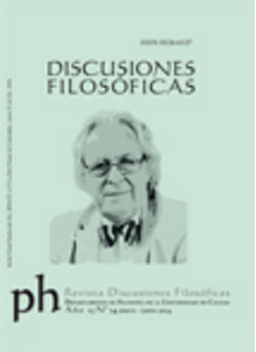Autores/as
Resumen
Las discusiones acerca de cómo interpretar metafísicamente las teorías científicas hunden profundamente sus raíces en la historia de la ciencia y la filosofía. El debate realismo vs. antirrealismo científico, sin embargo, se instituyó como un campo autónomo en la segunda mitad del siglo pasado. En el presente trabajo se indagará en lo que, se considera, son las dos fuentes principales del realismo científico moderno: las interpretaciones filosóficas de nuevas teorías a partir de fines del siglo XIX y la organización del campo epistemológico luego de que el empirismo lógico abandonara su posición dominante. Se sostiene que puede identificarse una tendencia general hacia la valoración de las cuestiones metafísicas en el análisis de las teorías científicas; tanto en la evaluación de la teoría atómica de Dalton y la mecánica cuántica como en la recepción crítica de la llamada 'concepción heredada'.
Citas
Boyd, R. N. “What Realism Implies and What it Does Not”. Dialectica. 1989: 5-29. Print.
Carnap, R. Fundamentación lógica de la física. Barcelona: Alianza, 1985. Impreso.
Copérnico, N. Sobre las revoluciones. Madrid: Tecnos, 1987. Impreso.
Duhem, P. Sozein ta phainomena: Essai sur la notion de théorie physique de Platon à Galilée. Paris: J. Vrin, 1990. Imprimé.
Hacking, I. “Experimentation and Scientific Realism”. Philosophical Topics. 1982: 71-87. Print.
Harman, G. “The Inference to the Best Explanation”. Philosophical Review. 1965: 88-95. Print.
Kuhn, T. La estructura de las revoluciones científicas. México: Fondo de Cultura Económico, 1975. Impreso.
Laudan, L. “A Confutation of Convergent Realism”. Philosophy of Science. 1981: 19-48. Print.
Lipton, P. “Truth, Existence, and the Best Explanation”. A. A. Derksen (ed.). The Scientific Realism of Rom Harré. Tilburg: Tilburg University Press, 1994. Print.
Mach, E. “The Economical Nature of Physical Inquiry”. Popular Scientific Lectures. La Salle: Open Court, 1986. Print.
Popper, K. R. The logic of scientific discovery. New York: Harper and Row, 1959. Print.
Psillos, S. Scientific realism: how science tracks truth. London: Routledge, 1999. Print.
Putnam, H. Mathematics, Matter and Method. Cambridge: Cambridge University Press, 1975. Print.
Russell, B. The Analysis of Matter. London: George Allen & Unwin, 1927. Print.
Sellars, W. F. Phenomenalism. Science, Perception and Reality. New York: The Humanities Press, 1963. Print.
Votsis, I. “Is structure not enough?” Philosophy of Science. 2003: 879-890. Print.
Worrall, J. “Structural Realism: The Best of Both Worlds?” Dialectica. 1989: 99-124. Print.

 PDF
PDF
 FLIP
FLIP





















